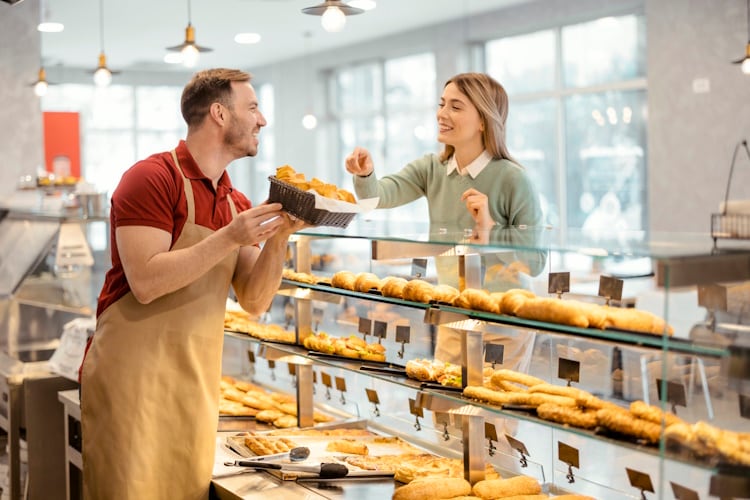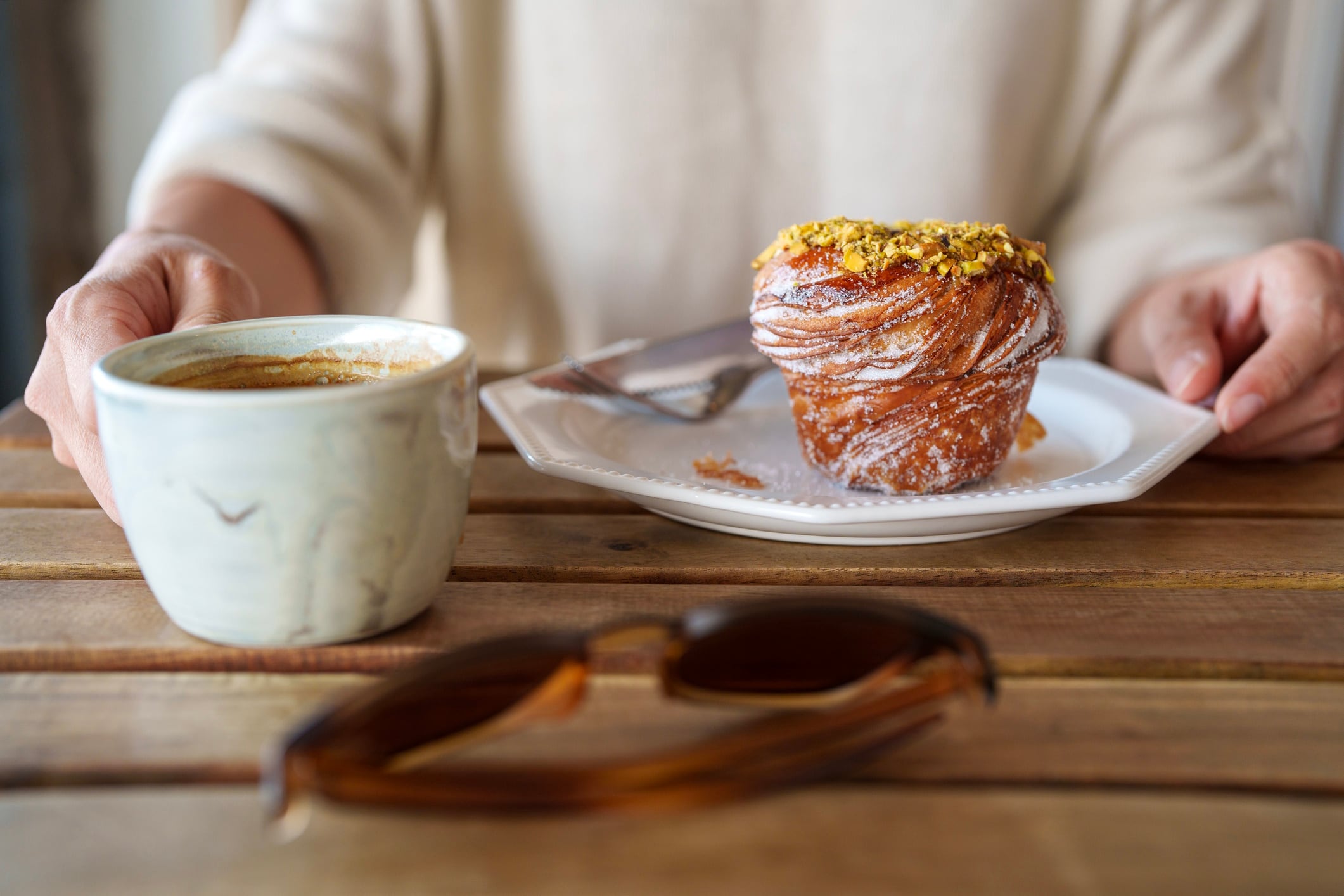Europeans are increasingly reaching for American-style sweet bakes – think muffins, doughnuts, cookies and cruffins – as indulgence, convenience and versatility converge to reshape the snacking landscape.
These formats offer not only instant gratification but also adaptability, allowing bakeries to easily customise flavour, texture and appearance to suit evolving tastes.
According to Innova Market Insights, American-style formats now account for 20% of Europe’s sweet bakery market, with filled muffin innovation alone up 15% year-on-year. This growth shows these products are becoming a regular part of how consumers snack, valued not just for indulgence, but for their convenience, familiarity and adaptability.
Although health-driven snacks still get their share of shelf space, data suggests emotion plays a larger role than many marketers might expect. A consumer study conducted by Cargill in November 2024 among 4,400 US consumers identified three dominant snacking personas: Impulse Munchers, Emotional Snackers and Guiltless Grazers. While their motivations vary, they share a common desire for sensory satisfaction - and indulgent bakery formats are often the solution.
“People want indulgence. They want variety,” said Laurine Franchi, business development manager for bakery, during an interview at iba 2025. “And sometimes, they want to disconnect from the idea of ‘eating right’ altogether.”
Meet the snackers
New research reveals three emotional drivers behind snacking behaviour.
Impulse Munchers snack on impulse, often in response to cravings or boredom. While they frequently reach for small indulgences, nearly 78% admit to feeling snack guilt. Most want to make smarter choices, but in the moment, taste almost always wins.
Emotional Snackers turn to snacks for comfort. 92% say they snack when anxious or stressed, while 90% feel guilty afterward. Despite their desire to eat better, 87% admit nutrition often takes a back seat when decompressing after a long day.
Guiltless Grazers are unapologetic and flavour driven. They snack throughout the day without remorse – 66% say they graze all day long, with 80% citing boredom as a trigger. For them, snacking is about enjoyment, not rules.
“This underscores the tension many consumers feel between what they think they should eat and what they want in the moment,” said Jana Mauck, marketing manager at Cargill. “Understanding their motivations - and how they shift based on specific occasions - offers a roadmap for production innovation.”
Filling the craving for flexibility

Much of this indulgence is being delivered through filled bakery formats, particularly those suited to frozen and packaged applications. At iba, Cargill introduced a new collection of freeze/thaw stable fillings formulated for muffins, doughnuts and cruffins – formats that align closely with the convenience-driven preferences of impulse snackers.
“One of our most important challenges was to find the right texture and the right flavour profiles that also fit with doughnuts – that it’s a good combination of the filling with the dough,” said Susen Gottwald, R&D bakery category leader. “We did have a lot of tasting rounds… to agree everyone on the flavour and the melting in the mouth.”
The R&D team began by assessing Cargill’s existing portfolio of fillings, but many required optimisations to perform well in post-pack, frozen formats. “There are clear differences in preferences, even within one country,” Gottwald explained. “Some prefer more intense cocoa notes; others want something sweeter or nuttier. We needed a profile that would work across regions but could still be tailored if needed.”
This tailoring begins with what Cargill calls its ‘essential portfolio’. “From that, we can build further on and modify texture and flavour for the customer,” said Gottwald.
Franchi added that sensory mapping data helps predict regional preferences and guide flavour formulation from the start. “It gives us a clear understanding of what consumers in different markets actually enjoy. That insight lets us adapt our solutions with more precision - and speed – so we’re not just guessing what will work.”
Indulgence with a safety net

The Cargill study revealed that Emotional Snackers - who snack to decompress – often feel regret after indulging. In fact, 90% said they snack when anxious or stressed; and nearly as many expressed guilt afterward. Despite this, they continue to choose bakery products for comfort, often in secret.
These conflicting desires are what Cargill’s Indulgence Redefined range aims to resolve. “We have fillings with peanut taste and hazelnut taste without hazelnuts and peanuts,” said Gottwald. “It’s good for the consumer because then you don’t have allergens, but it’s also good for the customers because then you don’t bring allergens into the production facility.”
Franchi noted the sustainability upside as well. “We’ve done a full life cycle analysis. The carbon footprint is significantly decreased – more than 60%. And also the land use, water use.”
Among the key innovations on display at iba was a confectionery alternative to chocolate, available in milk and dark formats, as well as nut- and cocoa-free fillings that mimic the sensory appeal of traditional spreads. “It’s also a more cost-efficient solution,” said Franchi. “Especially now, with the price of chocolate reaching quite high levels.”
Layered appeal

The Guiltless Grazers identified in the survey – those who snack frequently and unapologetically – ranked flavour and texture far above nutrition in their decisionmaking. This group expects snacks to be satisfying, layered and multisensory.
“Taste is king, but texture is queen,” said Franchi. “Multisensory experiences are definitely what consumers are wanting these days.”
Added Gottwald, “We’re seeing a lot of requests for products that combine different types of textures – something soft with something crunchy, or something creamy with chewy. You have the dough part, the filling, the coating – you can have at least three different textures in a bakery product minimum.”
One iba prototype featured a brownie base with a creamy centre, cookie layer and crunchy inclusions: an indulgent build designed to keep consumers coming back for that textural contrast.
5 texture trends dominating the sweet bakery space
Creamy-crunchy combos: Consumers want contrast. Think gooey fillings paired with crisp coatings or nutty inclusions in soft doughs. Texture layering is now essential for indulgence.
Multi-sensory mouthfeel: Bakery products are increasingly engineered to include at least three textures - such as chewy dough, smooth filling and snappy shell - all in one bite.
Inclusions that surprise: From caramelised sugar shards to crisped quinoa, unexpected inclusions add bite, interest and a premium feel.
Visual-texture synergy: Texture isn’t just about mouthfeel: cracked tops, glossy glazes and crunchy toppings also enhance shelf appeal and consumer perception of quality.
‘Soft plus’ doughs: Classic soft bakes are being reimagined to retain their signature softness while housing contrasting fillings or layered formats like cruffins and stuffed cookies.
The snackable bakery of 2030

Gottwald said the next wave of bakery innovation will be heavily influenced by cost pressures, ingredient volatility and growing sustainability demands.
“We do see a lot of cost optimisation requests, especially for ingredients that are more volatile. There’s also strong interest in egg reduction, egg replacement and more planet-friendly ingredients overall.” She noted a growing focus on protein and fibre; and alternatives to sugar but added that sugar reduction must come without the steep cost. “Bakery contains all the nice things that bring a lot of calories but also a lot of taste,” she added. “The challenge is reducing those without losing what makes bakery products enjoyable.”
She also anticipates more technology in bakery production. “Much more technology will go into the bakery production area. I think we will use more AI tools for prediction and recipe development… and it will help producers be more flexible.”
Franchi echoed this, emphasising the role of personalisation. “It helps to understand that not all snacking is rational,” she said. “Sometimes it’s about a moment of relief or comfort. Sometimes it’s just because it tastes good.”
In that light, the role of bakery isn’t just to feed but to respond, emotionally and practically, to what consumers really need in the moment. Because in 2025, indulgence isn’t just a flavour profile. It’s an emotional state and bakery is uniquely positioned to deliver it.
Cargill sets global standard for edible oils
Meanwhile, Cargill has earned the #1 global ranking on the inaugural Edible Oil Supplier Index 2025, published by the Access to Nutrition initiative (ATNi). The index recognises the company’s leadership in eliminating industrially produced trans-fatty acids (iTFAs) from its entire edible oils portfolio – even in countries without regulations requiring it.
Cargill scored 81.4% across 19 indicators in the ATNi assessment – outpacing the second-ranked company’s 14.2%. The evaluation reviewed practices across governance, product reformulation, marketing and engagement. This builds on a 2024 milestone when Cargill became the first global edible oil supplier fully aligned with WHO’s recommended limit of no more than 2g of iTFAs per 100g of fats and oils.
As of the end of 2023, only 53 countries had adopted best-practice iTFA limits. With much of the world still unregulated, ATNi is urging others to follow Cargill’s lead in setting a new global standard for edible oils and public health.




